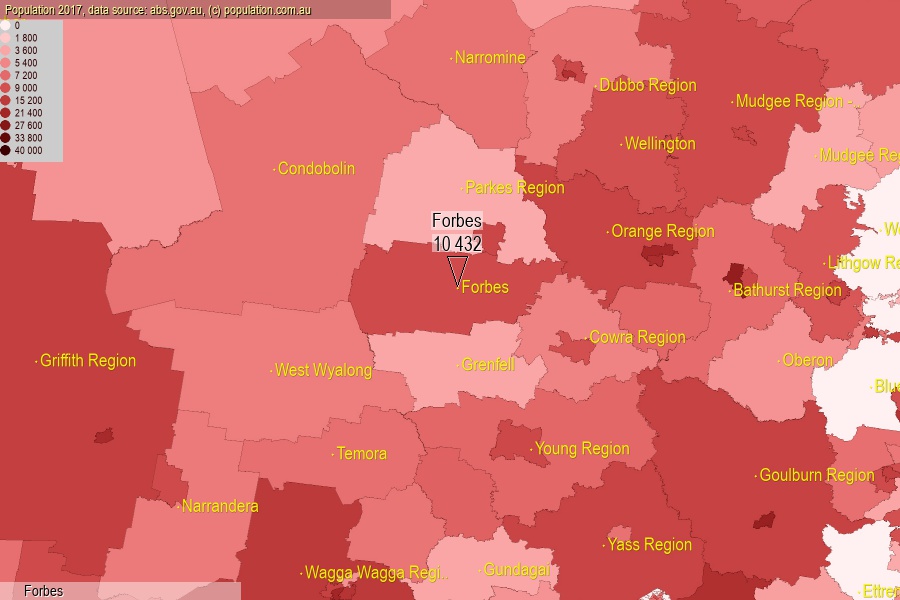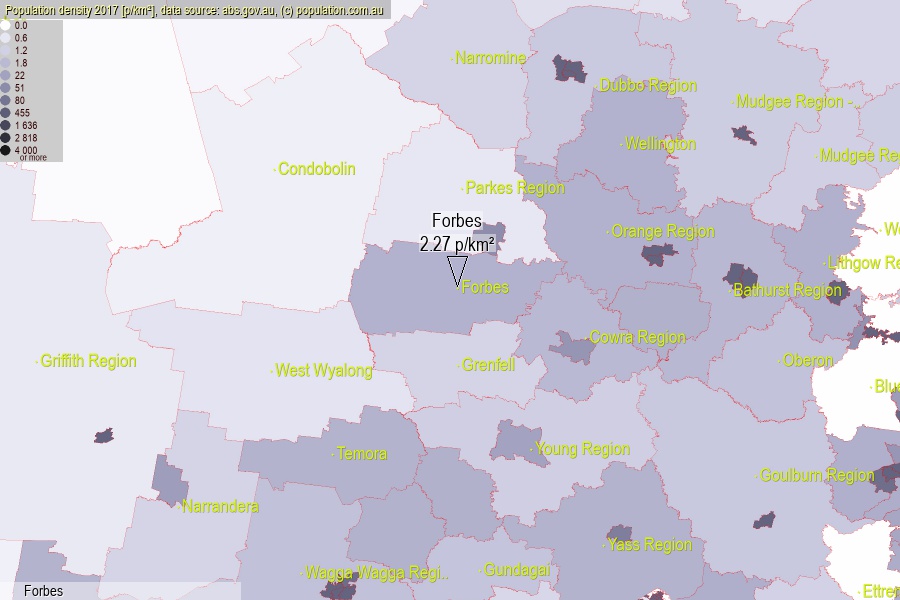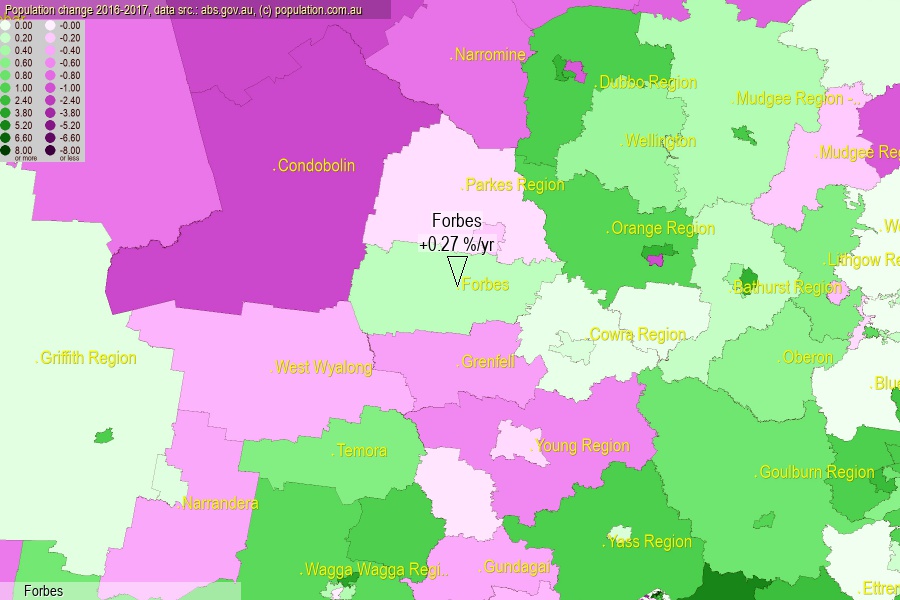 population.com.au
population.com.auLast official estimated population of Forbes (as Statistical Area Level 2) was 10 432 people (on 2017-06-30)[2]. This was 0.04% of total Australian population and 0.131% of NSW population. Area of Forbes is 4 598.00 km², in this year population density was 2.27 p/km² . If population growth rate would be same as in period 2016-2017 (+0.27%/yr), Forbes population in 2025 would be 10 659. [0]



Click to enlarge. Forbes is located in the center of the images.
Population [people], population density [p./km²] and population change [%/year] [2]
View borders » (new window) [4]
[1991-1992] +0.50 %/Yr.
[1992-1993] -0.42 %/Yr.
[1993-1994] -0.28 %/Yr.
[1994-1995] -0.99 %/Yr.
[1995-1996] -0.57 %/Yr.
[1996-1997] -0.34 %/Yr.
[1997-1998] -0.25 %/Yr.
[1998-1999] -0.88 %/Yr.
[1999-2000] -0.44 %/Yr.
[2000-2001] -0.37 %/Yr.
[2001-2002] -0.62 %/Yr.
[2002-2003] -1.25 %/Yr.
[2003-2004] -2.03 %/Yr.
[2004-2005] -0.68 %/Yr.
[2005-2006] -0.74 %/Yr.
[2006-2007] -0.30 %/Yr.
[2007-2008] -0.68 %/Yr.
[2008-2009] -0.23 %/Yr.
[2009-2010] 0.00 %/Yr.
[2010-2011] +0.31 %/Yr.
[2011-2012] +0.44 %/Yr.
[2012-2013] +0.71 %/Yr.
[2013-2014] +0.62 %/Yr.
[2014-2015] +0.45 %/Yr.
[2015-2016] +0.44 %/Yr.
[2016-2017] +0.27 %/Yr.
[0] Calculated with linear interpolation from officially estimated population
[1] Read more about SA2 and Australian Statistical Geography Standard (ASGS) on abs.gov.au
[2] Population data from Australian Bureau of Statistics (Population and density: 2017; change: 2016-2017)
[3] Digital Boundaries: Australian Statistical Geography Standard (ASGS) 2016.
[4] Border coordinates are simplifyed using Ramer-Douglas-Peucker algorithm.